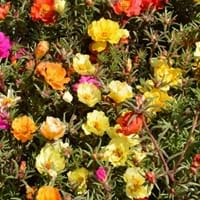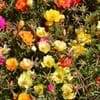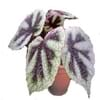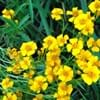Type
Flowering Plants
Tree
Origin
South America
Middle Africa
Types
Not available
Not Available
Number of Varieties
Not Available
Habitat
gardens, Roadsides, Waste areas
Moist Soils
USDA Hardiness Zone
5-11
3-9
AHS Heat Zone
12 - 1
12 - 1
Sunset Zone
A1, A2, A3, H1, H2, 1a, 1b, 2a, 2b, 3a, 3b, 4, 5, 6, 7, 8, 9, 10, 11, 12, 13, 14, 15, 16, 17, 18, 19, 20, 21, 22, 23, 24
H1, H2, 1a, 1b, 2a, 2b, 3a, 3b, 4, 5, 6, 7, 8, 9, 10, 11, 12, 13, 14, 15, 16, 17, 19, 20, 21, 22, 23, 24
Habit
Prostrate/Trailing
Upright/Erect
Flower Color Modifier
Bicolor
Bicolor
Fruit Color
Not Available
Orange, Gold, Orange Red
Leaf Color in Spring
Green
Green, Light Green
Leaf Color in Summer
Green
Green, Light Green
Leaf Color in Fall
Green
Green, Yellow green
Leaf Color in Winter
Light Green
Light Green
Leaf Shape
Needle like
imparipinnate
Plant Season
Summer, Fall
Summer, Fall
Sunlight
Full Sun
Full Sun, Partial Sun
Growth Rate
Very Fast
Fast
Type of Soil
Loam, Sand
Loam
The pH of Soil
Neutral, Alkaline
Acidic, Neutral
Soil Drainage
Well drained
Well drained
Bloom Time
Indeterminate
Summer
Tolerances
Drought, Heat Tolerance
Drought
Where to Plant?
Container, Ground, Pot
Ground
How to Plant?
Seedlings
Seedlings
Plant Maintenance
Low
Medium
Watering Requirements
Average Water Needs
Requires a lot of watering
In Summer
Lots of watering
Lots of watering
In Spring
Moderate
Moderate
In Winter
Average Water
Average Water
Soil pH
Acidic, Neutral, Slightly Acidic
Neutral
Soil Type
Well drained
Clay
Soil Drainage Capacity
Well drained
Rich
Sun Exposure
Full Sun
Full Sun
Pruning
Remove damaged leaves, Remove dead branches, Remove dead leaves, Shearing
Remove damaged leaves, Remove dead branches, Remove dead leaves
Fertilizers
Requires high amount of nitrogen
All-Purpose Liquid Fertilizer
Pests and Diseases
Aphids, Botrytis Blight, Brown Spots, Gray mold, Root rot, Stem rot
Red blotch
Plant Tolerance
Drought, Heat Tolerance
Drought
Flowers
Showy
Insignificant
Flower Petal Number
Semi-Double
Single
Foliage Texture
Fine
Coarse
Foliage Sheen
Matte
Matte
Attracts
Butterflies
Birds
Allergy
Not Available
Not Available
Aesthetic Uses
Beautification, Bouquets, Cottage Garden, Ground Cover, Showy Purposes
Not Available
Beauty Benefits
Skin Problems
Not Available
Environmental Uses
Air purification
Air purification
Medicinal Uses
Depurative, Insect Bites, Liver problems, Snakebite, Swelling
Anti-oxidant, Digestive, Fiber, Minerals
Part of Plant Used
Flowers, Leaves, Stem, Whole plant
Flowers, Fruits, Leaves, Seeds
Other Uses
Showy Purposes, Used As Food, Used for its medicinal properties
Animal Feed, For making oil, Used as a nutritious food item
Used As Indoor Plant
No
No
Used As Outdoor Plant
Yes
Yes
Garden Design
Cottage garden, Edible
Fruit Tree
Botanical Name
PORTULACA grandiflora
SOLANUM integrifolium
Common Name
Moss Rose, Portulaca, Sundial Scarlet Portulaca
Chinese Scarlet Eggplant, Pumpkin Tree, Turkish Eggplant, Turkish Orange Eggplant
In Hindi
Portulaca
कद्दू पेड़
In German
Portulak
Kürbis-Baum
In French
portulaca
arbre de citrouille
In Spanish
Portulaca
árbol de calabaza
In Greek
Portulaca
δέντρο κολοκύθας
In Portuguese
Portulaca
árvore abóbora
In Polish
Portulaca
drzewa dyni
In Latin
Portulaca
PEPO ligno
Phylum
Magnoliophyta
Magnoliophyta
Class
Magnoliopsida
Magnoliopsida
Order
Caryophyllales
Scrophulariales
Family
Portulacaceae
Oleaceae
Clade
Angiosperms, Core eudicots, Eudicots
Not Available
Tribe
Not Available
Not Available
Subfamily
Not Available
Not Available
Importance of Portulaca and Pumpkin Tree
Want to have the most appropriate plant for your garden? You might want to know the importance of Portulaca and Pumpkin Tree. Basically, these two plants vary in many aspects. Compare Portulaca and Pumpkin Tree as they differ in many characteristics such as their life, care, benefits, facts, etc. Every gardener must at least have the slightest clue about the plants he wants to plant in his garden. Compare their benefits, which differ in many ways like facts and uses. The medicinal use of Portulaca is Depurative, Insect Bites, Liver problems, Snakebite and Swelling whereas of Pumpkin Tree is Anti-oxidant, Digestive, Fiber and Minerals. Portulaca has beauty benefits as follows: Skin Problems while Pumpkin Tree has beauty benefits as follows: Skin Problems.
Compare Facts of Portulaca vs Pumpkin Tree
How to choose the best garden plant for your garden depending upon its facts? Here garden plant comparison will help you to solve this query. Compare the facts of Portulaca vs Pumpkin Tree and know which one to choose. As garden plants have benefits and other uses, allergy is also a major drawback of plants for some people. Allergic reactions of Portulaca are Not Available whereas of Pumpkin Tree have Not Available respectively. Having a fruit bearing plant in your garden can be a plus point of your garden. Portulaca has no showy fruits and Pumpkin Tree has showy fruits. Also Portulaca is not flowering and Pumpkin Tree is not flowering . You can compare Portulaca and Pumpkin Tree facts and facts of other plants too.





